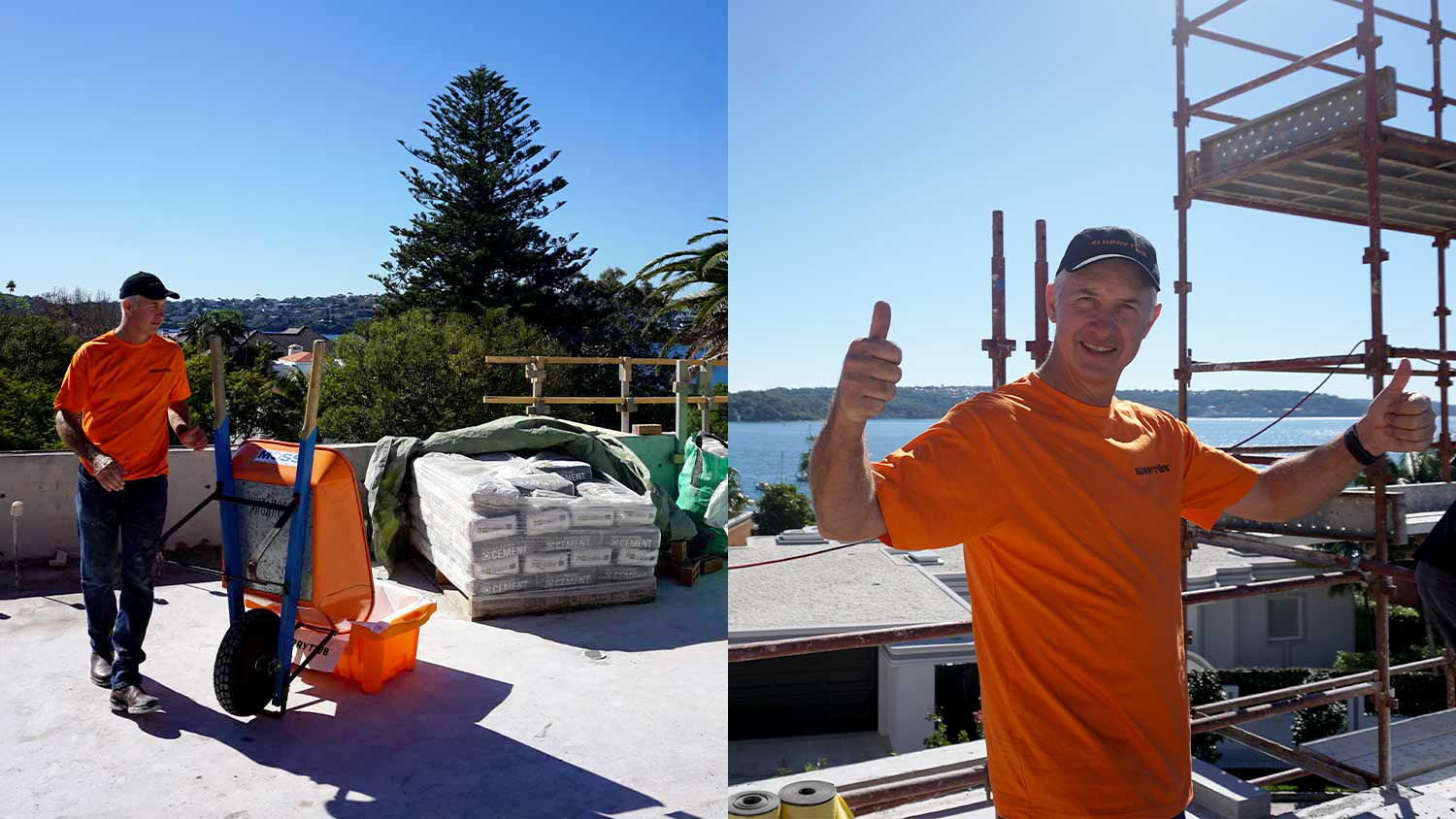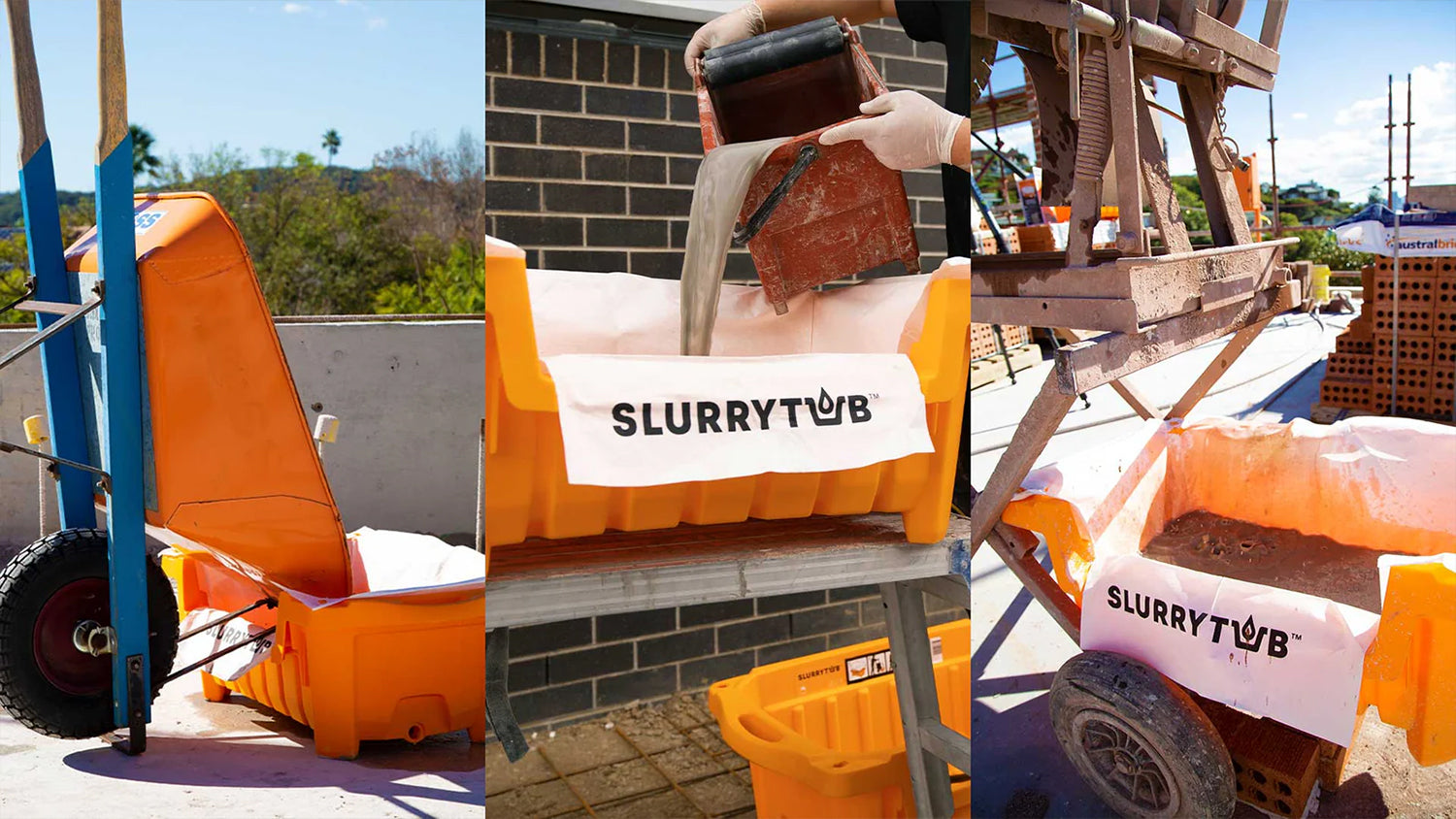Dump Your Slurry The Better Way.
WHY SLURRYTUB?
Our founder, Angus Hudson has been a builder for over 30 years and invented SLURRYTUB® after witnessing a recurring and difficult problem faced daily on many building sites. The wash up and disposal of wet trade waste (slurry) by tradesmen. Under the current and outdated guidelines, setting up a ‘washout area’ for wet tradesmen on site was impractical and often lead to tradesmen taking shortcuts. Meaning the cement slurry would be dumped into gardens, lawns or onto the streets and subsequently down a stormwater drain. From observing this problem, the idea was created to develop a new, cost effective and simple ‘best practice’ solution to significantly improve the environmental performance of building sites and overall stormwater quality.
Forget Your Dodgy Shortcut Fix.
THE BIG PROBLEM
Wet trade slurry from the wash up of cement, concrete, grouts, render and sediment is generated on building sites each day. Typically, at the end of the day, all tools including cutting machinery, mixers, wheelbarrows, and hand tools must be washed before the wet trade slurry sets. Often the equipment is cleaned in improvised ‘wash out areas’ including gardens and lawns or on our pavements, driveways, roads, and gutters, leaving an unsightly mess. This wrongful slurry disposal when washing up causes serious environmental harm including soil degradation or worse, contamination of stormwater drains and waterways.
Slurry waste incorrectly disposed of in gardens can leach through the soil and alter the soil chemistry, inhibit plant growth, and contaminate the groundwater. While slurry entering stormwater drains quickly ends up in our rivers, creeks, groundwaters and oceans. Heavy metals, toxic chemicals, nutrients, and other pollutants bind to the sediments and are easily transported spreading the pollution and causing irreversible damage to our delicate ecosystems and aquatic life. Irresponsible disposal of the waste will also cause serious maintenance problems with the stormwater infrastructure - which will result in a large financial penalty for the site manager, usually the builder.
Job Site Done Right.
THE SIMPLE SOLUTION
We created SLURRYTUB® as a simple and cost-effective solution to solve a major problem in the building industry. The portable filtering system was designed to capture and filter wet trade slurry and offers an environmentally friendly way to clean your tools, equipment by filtering the damaging sediment found in slurry. Leaving visibly clear water to drain within a designated washout area or be recycled on the job. The filtration system captures the solids allowing the hardened waste to easily be disposed of in a controlled environment.
SLURRYTUB® is a simple, portable designated washout area that every trade should add to their daily kit. SLURRYTUB® has already been taken up by a number of trades (etc. bricklayer, tiler, carpenter, landscaper, plumber). It is an Aussie-made product that will save time on daily clean-ups, make the job site safer, avoid significant penalties/fines, improve company reputations, and importantly keep clients happy.
SLURRYTUB® as an environmental solution, stops damaging material from entering our stormwater drains and waterways. This means the heavy metals and containments that typically get hosed into the drain or garden are now being disposed of responsibly. We have removed the need to hose away slurry saving thousands to millions of litres per year. Importantly, the filtering system also allows the clear water from the tub to be collected and recycled on the job site.



